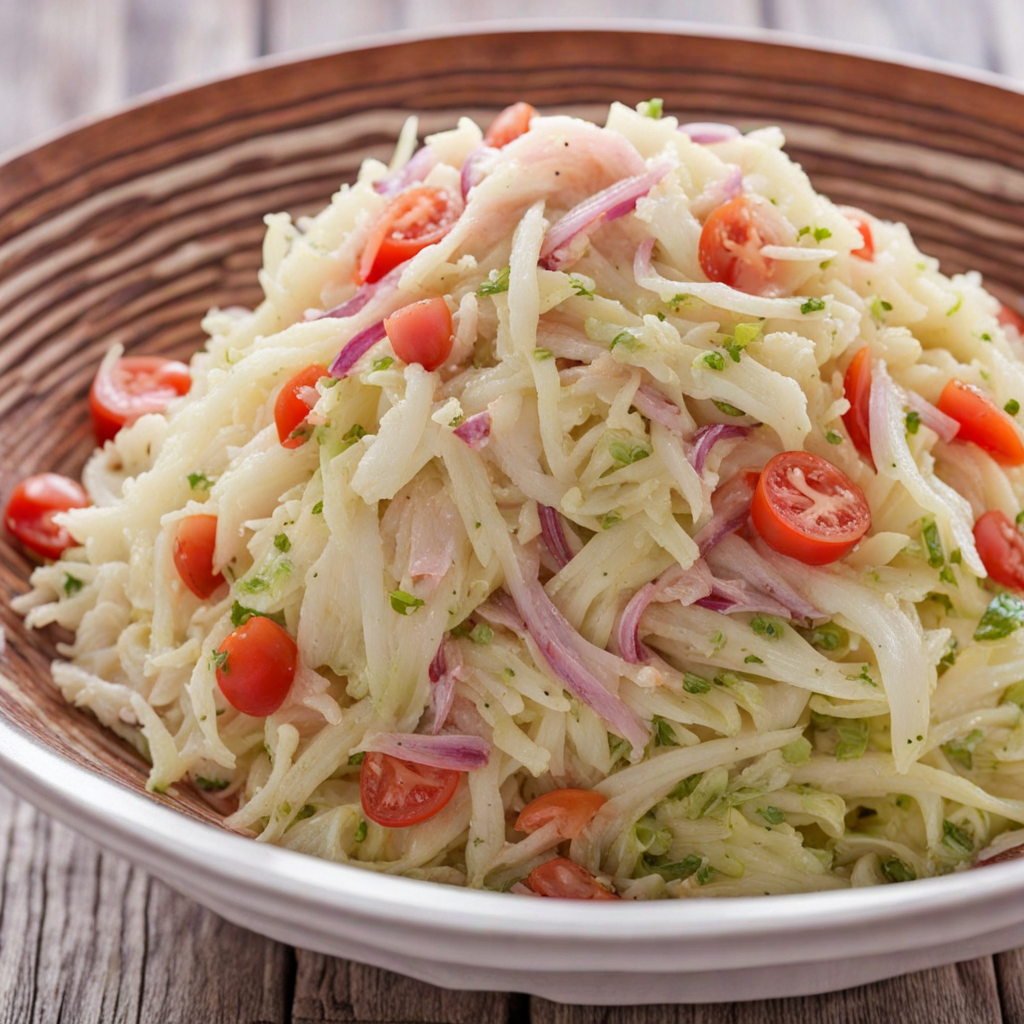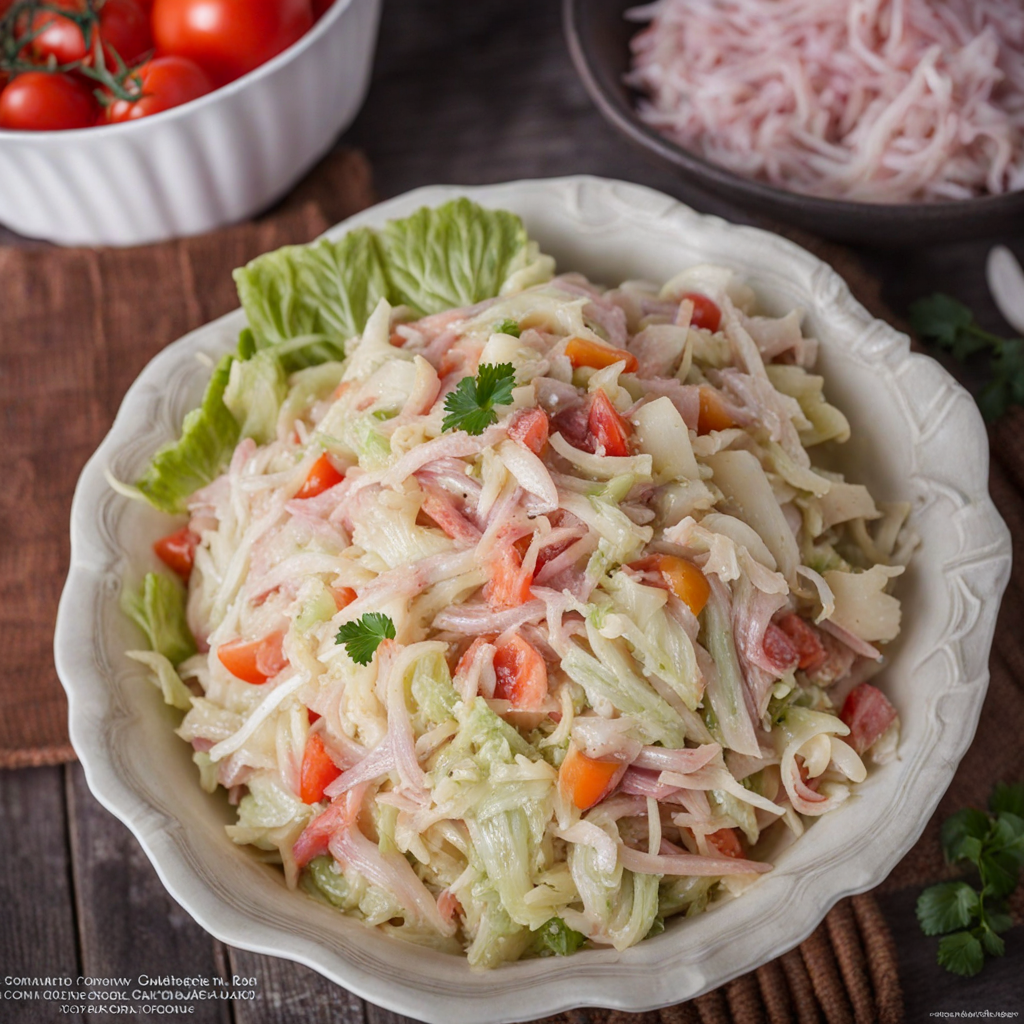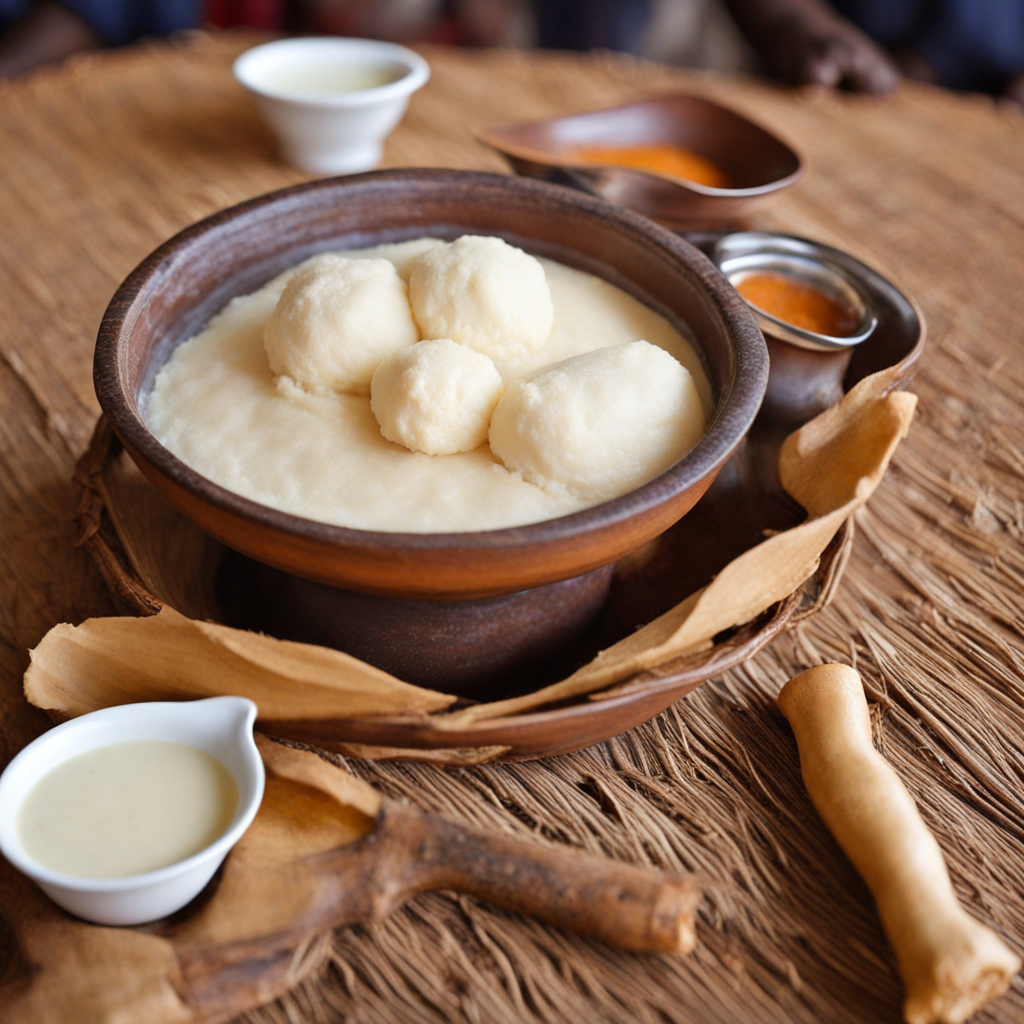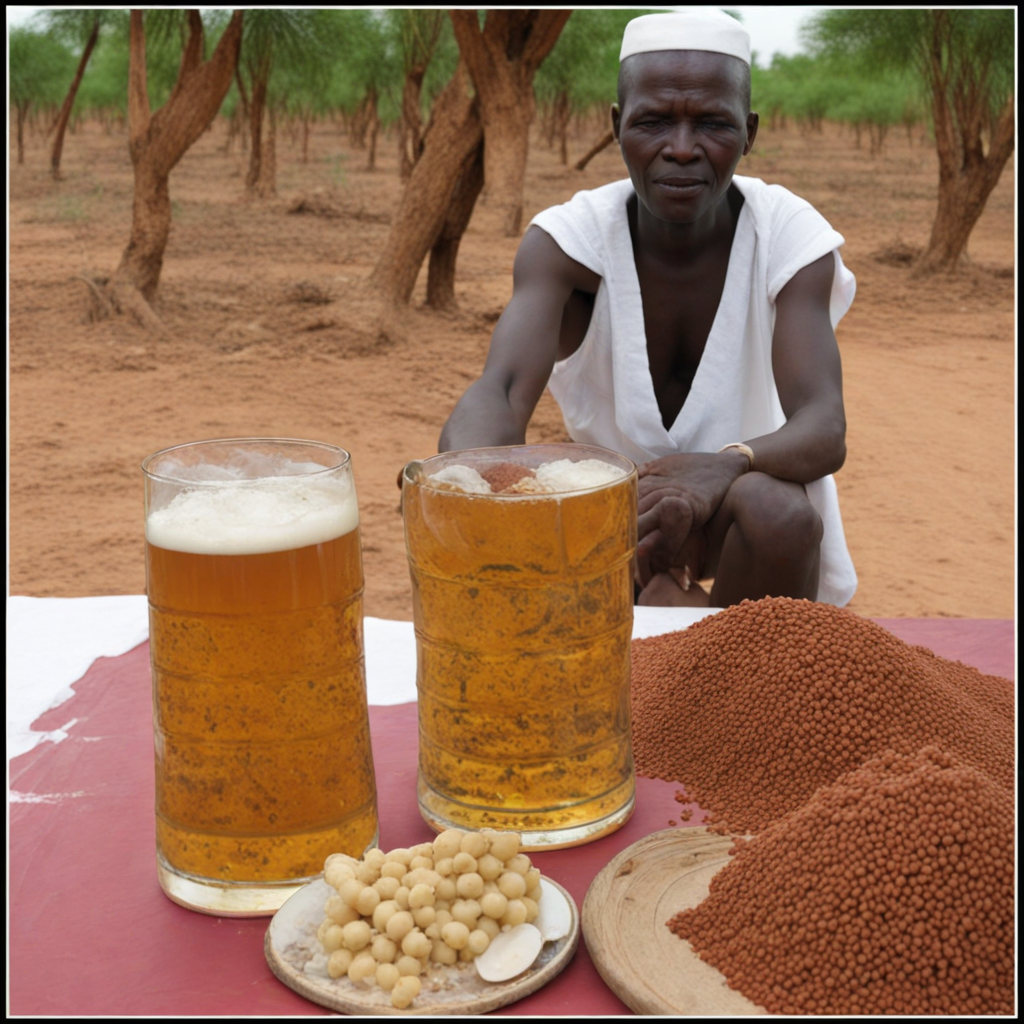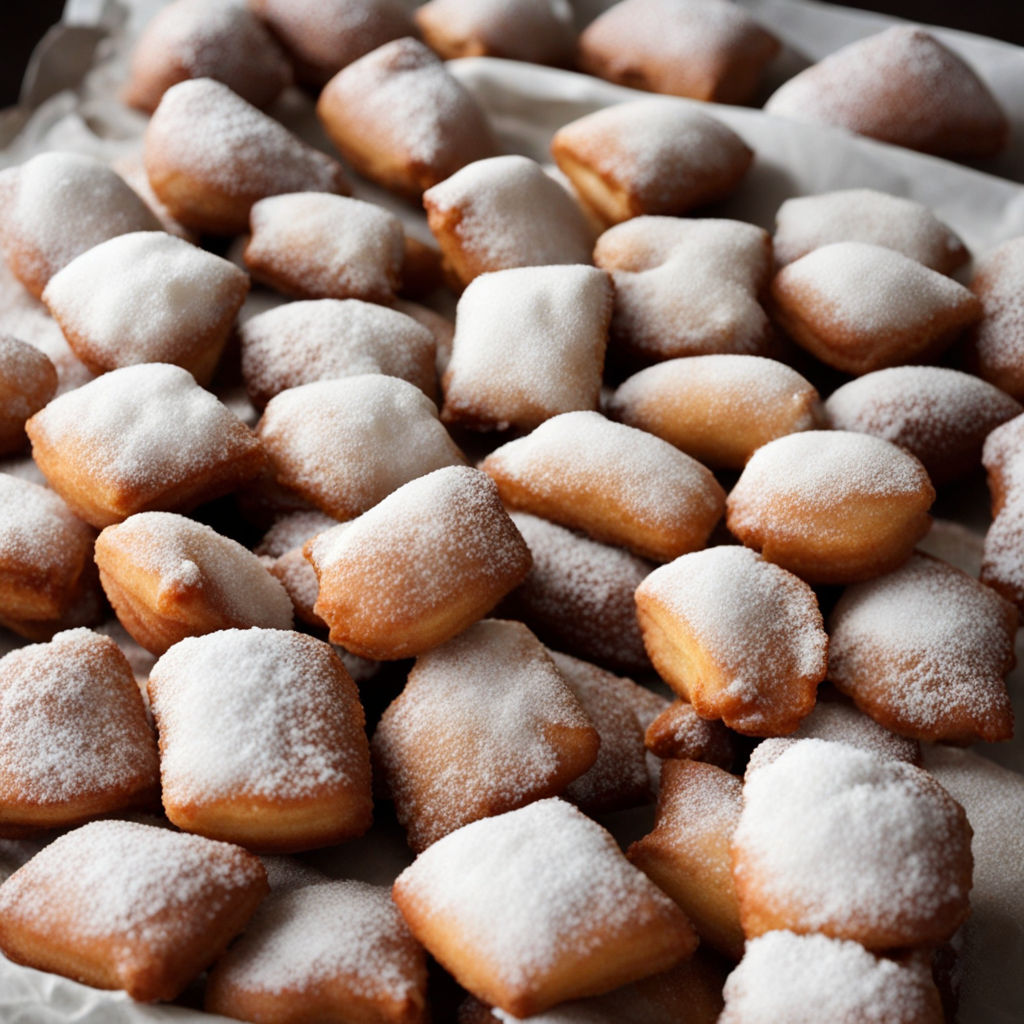Banfora Cabbage Salad
Banfora Cabbage Salad is a vibrant and refreshing dish that showcases the unique flavors and freshness of ingredients found in Burkina Faso. At its core, this salad features finely shredded cabbage, which provides a crisp and crunchy texture. The cabbage is typically mixed with an array of colorful vegetables, such as ripe tomatoes, bell peppers, and onions, all of which contribute to the visual appeal and flavor complexity of the dish. The combination of these fresh vegetables brings a delightful crunch and a refreshing taste that perfectly balances the richness of other ingredients. What sets Banfora Cabbage Salad apart is its dressing, which often includes a blend of locally sourced ingredients. A simple yet zesty dressing made from lime or lemon juice, olive oil, and a touch of salt and pepper enhances the natural flavors of the vegetables. Some variations may incorporate spices such as ground chili or even a hint of garlic, adding depth and warmth to the overall flavor profile. This dressing not only brightens the salad but also ties the ingredients together, making each bite a harmonious experience. Beyond its delicious taste, Banfora Cabbage Salad is a nutritious option that embodies the essence of Burkina Faso's culinary heritage. It is often served as a side dish, complementing grilled meats or traditional stews, but it can also be enjoyed on its own as a light and healthy meal. The use of fresh, locally sourced produce makes it a great choice for those seeking to explore new flavors while indulging in the wholesome ingredients found in West African cuisine. Whether you're looking for a new side dish or a refreshing main course, this salad is sure to awaken your palate and introduce you to the rich culinary traditions of Burkina Faso.
How It Became This Dish
The History of Salade de Chou Banfora: A Culinary Reflection of Burkina Faso Introduction: A Taste of Tradition Salade de Chou Banfora, a vibrant and refreshing cabbage salad, is more than just a dish in Burkina Faso; it is a cultural emblem that encapsulates the rich history, diverse agricultural practices, and social dynamics of the region. Named after the town of Banfora, located in the southwestern part of Burkina Faso, this salad offers a delightful blend of local ingredients, embodying the essence of Burkinabé cuisine and its connection to the land. Origins: Roots in the Soil The origins of Salade de Chou Banfora can be traced back to the agricultural practices of the Mossi people, one of the largest ethnic groups in Burkina Faso. Cabbage, a hardy vegetable that thrives in the cooler climates of the highlands, became a staple crop due to its adaptability and nutritional value. In the 19th century, as trade routes expanded, European settlers introduced new varieties of vegetables, including cabbages, which were embraced by local farmers. The cultivation of cabbage in the region flourished, particularly around Banfora, which is known for its fertile volcanic soil and favorable climate. This agricultural abundance allowed local communities to develop dishes that showcased their produce. Salade de Chou Banfora emerged as a simple yet flavorful way to celebrate the harvest, utilizing fresh, locally sourced ingredients that were readily available. Cultural Significance: A Dish with Meaning Salade de Chou Banfora is not merely a culinary creation; it is steeped in cultural significance. Food in Burkina Faso is deeply intertwined with social customs, rituals, and traditions, and this salad is often served during communal gatherings, celebrations, and family events. It represents hospitality and is a symbol of sharing, reflecting the communal values that are integral to Burkinabé society. In many households, making Salade de Chou is a family affair, often involving multiple generations. The preparation process itself fosters a sense of unity and togetherness, as family members gather to chop vegetables, mix ingredients, and share stories. The salad is typically enjoyed alongside traditional dishes, such as tô (a dough-like staple made from millet or sorghum) and grilled meats, enhancing the communal experience. Moreover, Salade de Chou Banfora is often associated with special occasions such as weddings, religious ceremonies, and local festivals. Its colorful presentation, featuring vibrant greens, reds, and yellows, adds a festive touch to any table, making it a favorite among guests. The salad also serves as a reminder of the importance of seasonal eating and the connection between food, environment, and community. Development Over Time: A Culinary Evolution As Burkina Faso has evolved, so too has the Salade de Chou Banfora. While the fundamental ingredients remain consistent, the salad has adapted to reflect changing tastes, available produce, and culinary influences from neighboring countries. The incorporation of additional vegetables, such as carrots, bell peppers, and tomatoes, has added a new dimension of flavor and nutrition, allowing the dish to evolve with the times. In recent decades, globalization and urbanization have introduced new culinary trends into Burkinabé cuisine. Young chefs and home cooks have begun experimenting with contemporary interpretations of traditional recipes, infusing international flavors while maintaining the essence of the dish. For instance, some variations now include dressings made from yogurt or avocado, blending local and global culinary practices. The rise of health consciousness among consumers has also influenced the preparation of Salade de Chou Banfora. As people become more aware of nutritional values, the salad is increasingly seen as a healthy option, rich in vitamins and fiber. This perception has contributed to its popularity not only in local markets but also in urban restaurants and cafes, where it is served as a light meal or appetizer. Salade de Chou Banfora in the Modern Context Today, Salade de Chou Banfora serves as a culinary ambassador for Burkina Faso, showcasing the country's agricultural richness and culinary heritage on international platforms. Food festivals and culinary competitions often feature this salad, allowing chefs to demonstrate their creativity while honoring traditional practices. As a result, the dish has garnered recognition beyond its borders, drawing interest from food enthusiasts worldwide. Moreover, the salad's simplicity and versatility make it a perfect canvas for innovation. With the growing popularity of plant-based diets, Salade de Chou Banfora has found its place in the global culinary scene as a vibrant, healthy option. This adaptability ensures that the salad remains relevant and cherished, bridging the gap between tradition and modernity. Conclusion: A Legacy of Flavor and Community Salade de Chou Banfora is a testament to the enduring nature of food as a reflection of culture, community, and identity. From its humble beginnings in the fertile soils of Banfora to its status as a celebrated dish in Burkina Faso and beyond, this salad embodies the spirit of resilience and creativity that defines the country's culinary landscape. As we savor each bite of this colorful dish, we not only indulge in its delightful flavors but also partake in a rich tapestry of history, tradition, and connection to the land. Salade de Chou Banfora serves as a reminder that food is more than sustenance; it is a celebration of life, a bridge between generations, and a reflection of the diverse cultures that shape our world. In every crisp leaf of cabbage lies a story waiting to be told—a story that continues to evolve, inviting everyone to join in the celebration of Burkina Faso's gastronomic heritage.
You may like
Discover local flavors from Burkina Faso


